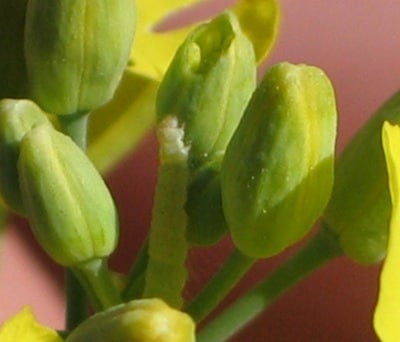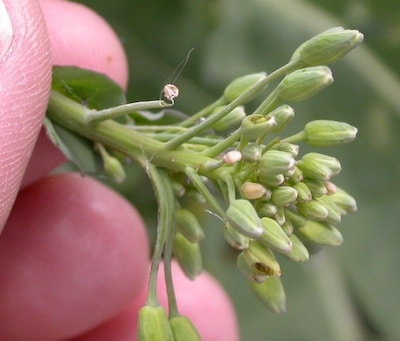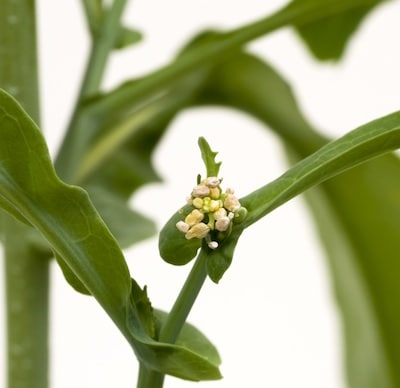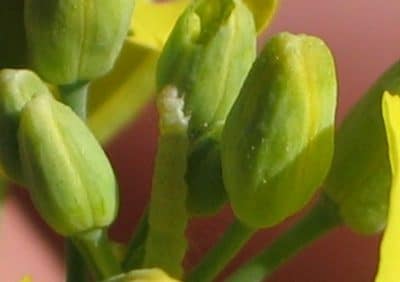


Insects, heat stress, hail and sulphur deficiency can all cause bud discoloration and damage. Scouting closely for insects may be required to find out which might be the cause, especially if heat stress and hail can be ruled out. Diamondback moth larvae can feed down in the growing point causing flowers to discolor as though under heat stress or nutrient shortage, but close inspection of the buds should reveal the physical damage from feeding. Economic thresholds for diamondback moth at this stage are lower than for pod stages: thresholds are 100-150 larvae/m2 in immature and flowering fields, and 200-300 larvae/m2 in podded canola fields. Note that these threshold numbers are based on stands averaging 150 to 200 plants/m2. In areas where stands are thinner the economic threshold should be lowered accordingly.
Before spraying, make sure larvae are still present and feeding. They should be fairly evident when you know to look for them. If larvae cannot be found, beneficial insects may have reduced populations. Or perhaps some other insect or stress is the cause. Lygus bug feeding is another possibility. Use a magnifying glass and look at buds for holes. Also check all buds in a cluster. If a few are brown or yellow and the rest are normal, this is one sign of possible lygus feeding, since environmental causes will normally affect most of the visible buds.
Click here if you suspect sulphur deficiency.

